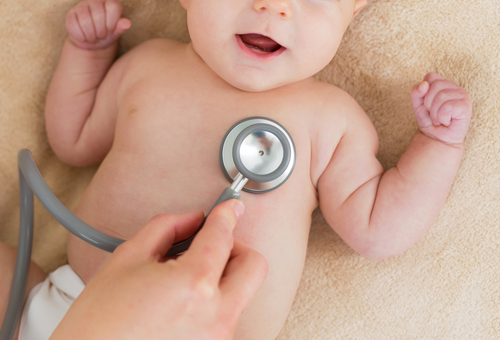NY Study Shows Feasibility and Benefits of SMA Newborn Screening

A population-based study conducted in the state of New York demonstrates the feasibility and benefits of newborn screening for spinal muscular atrophy (SMA). Supported by these findings, researchers recommend adding SMA genetic tests to the national recommended uniform screening panel.
The study, “Pilot study of population-based newborn screening for spinal muscular atrophy in New York state,” was published in Genetics in Medicine.
SMA is the most common cause of death among children under the age of two. It is a genetic disease mainly caused by point deletions on a particular portion of the DNA sequence of the SMN1 gene.
With the approval of Biogen’s Spinraza (nusinersen) by the U.S. Food and Drug Administration in December 2016, and given SMA’s well-characterized genetic nature, the benefits of newborn screening for SMA have been widely discussed. Early recognition of the disease would allow prompt intervention, ultimately leading to improved patient outcomes.
Currently, four states — Indiana, Minnesota, Missouri and Utah — are putting screening programs into place, and pilot programs are underway in Georgia, Massachusetts, New York, North Carolina, and Wisconsin.
In 2008 SMA was nominated to the U.S. Health and Human Services Secretary’s Advisory Committee on Heritable Disorders in Newborns and Children for inclusion in the recommended uniform newborn screening panel. However, the request “was denied because of a lack of available treatment and newborn screening pilot studies demonstrating feasibility,” the study authors explained.
To further determine the feasibility and utility of SMA newborn screening, Columbia University researchers conducted a study of SMA patients from the state of New York.
From January 2016 to January 2017 the team screened 3,826 newborns for SMN1 deletions at three hospitals in New York City: New York Presbyterian Morgan Stanley Children’s Hospital; New York Presbyterian Allen Hospital, and; New York Presbyterian Weill Cornell Medical Center.
Of all parents who were approached to participate in the study ,93.03% agreed. The most common reasons provided by those who declined to take part in the study were general distrust of the healthcare system and prior bad experiences with healthcare.
Join the SMA forums: an online community of support for SMA patients.
A total of 94.6% of newborns immediately were found to be negative for SMA. Only 3% of the samples had to be retested due to lack of sample quality or suspicious results.
Overall, the screening revealed that 3,766 of all newborns were negative for any SMN1 variant related to SMA, 59 were carriers of SMN1 deletions, and only one infant had a genetic deletion in the SMN1 gene.
The one infant who was identified has having an SMN1 deletion was then evaluated at the Columbia University Spinal Muscular Atrophy Clinical Research Center at age 7 days. A new test confirmed the initial genetic result, which was found to be closely associated with SMA type 1 classification.
At the age of 13 days, the parents gave their consent to include the child in the NURTURE trial (NCT02386553) that is assessing the effectiveness and safety of treatment with Spinraza compared to the disease’s natural course.
During her first year of life the patient received the drug six times, delivered through the spinal canal, and follow-up visits revealed she achieved all the developmental milestones expected for her age.
Up until the date of the study’s publication she remained “asymptomatic with a normal physical examination,” with no hospitalizations on her clinical record or need of “any respiratory or nutritional support,” the researchers reported.
“Given the feasibility of screening, the success of this pilot study, and the demonstrated efficacy and Food and Drug Administration approval of nusinersen [Spinraza] in December 2016, we believe SMA should be considered for addition to the recommended uniform newborn screening panel,” they concluded.







